Sink your fangs into a tactical strategy title that leaves an impression even if it does have several areas that could use improvement.
Type: Single-player
Genre: Strategy
Developer: Palindrome Interactive
Publisher: Kalypso Media
Release date: 28 August, 2020


Overview
Vampires seem to be an even bigger hit in recent months than they usually are. Maybe it’s the smell of Bloodlines 2 in the air, or maybe we’re just shifting our focus from zombies for a bit. Either way, like zombies, vampires can be great if done well but, like many genres, an utter disaster if done poorly. I, for one, am happy to see the recent explosion in blood-sucking titles especially when they’re adding something new that we haven’t seen before.
Immortal Realms: Vampire Wars manages to be both familiar and new. Although not particularly complex, it covers its bases by incorporating a strategic map with plenty of locations to keep it interesting, tactical combat that has enough depth to keep even a veteran of the genre entertained, and faction progression that will keep your forces improving from the start of a scenario to its end. I won’t complain about the three playable vampiric factions and their campaigns either.
A Variety of Vamps in a Hellish World
Immortal Realms: Vampire Wars has you taking command over a faction of vampires as they lash out at the world around them to subdue it under their will. Though there are plenty of vampiric factions to contend with, those pesky humans are consistently a thorn in your side. Don’t underestimate them though; peasants may offer little threat to your superhuman forces, but a squad of trained knights is a different scenario entirely.
There are three key vampire clans available to play: the Dracul, the Nosfernus, and the Moroia. The Dracul clan claims to be the only one that maintains a pure bloodline and they rule over their subjects more or less like a human lord might save for the blood tax, of course. The Nosfernus like to play around with the dead and pack their armies full of skeletons, zombies, and ghosts as opposed to the half and thin-blood human-like forces of the Dracul. Finally, the Moroia go a third way and focus entirely on the arcane, using magic to summon and create forces composed of gargoyles, mages, and automatons. These clans are immediately available to be played in both skirmish and sandbox modes, but they must be unlocked in a specific order for the campaign.
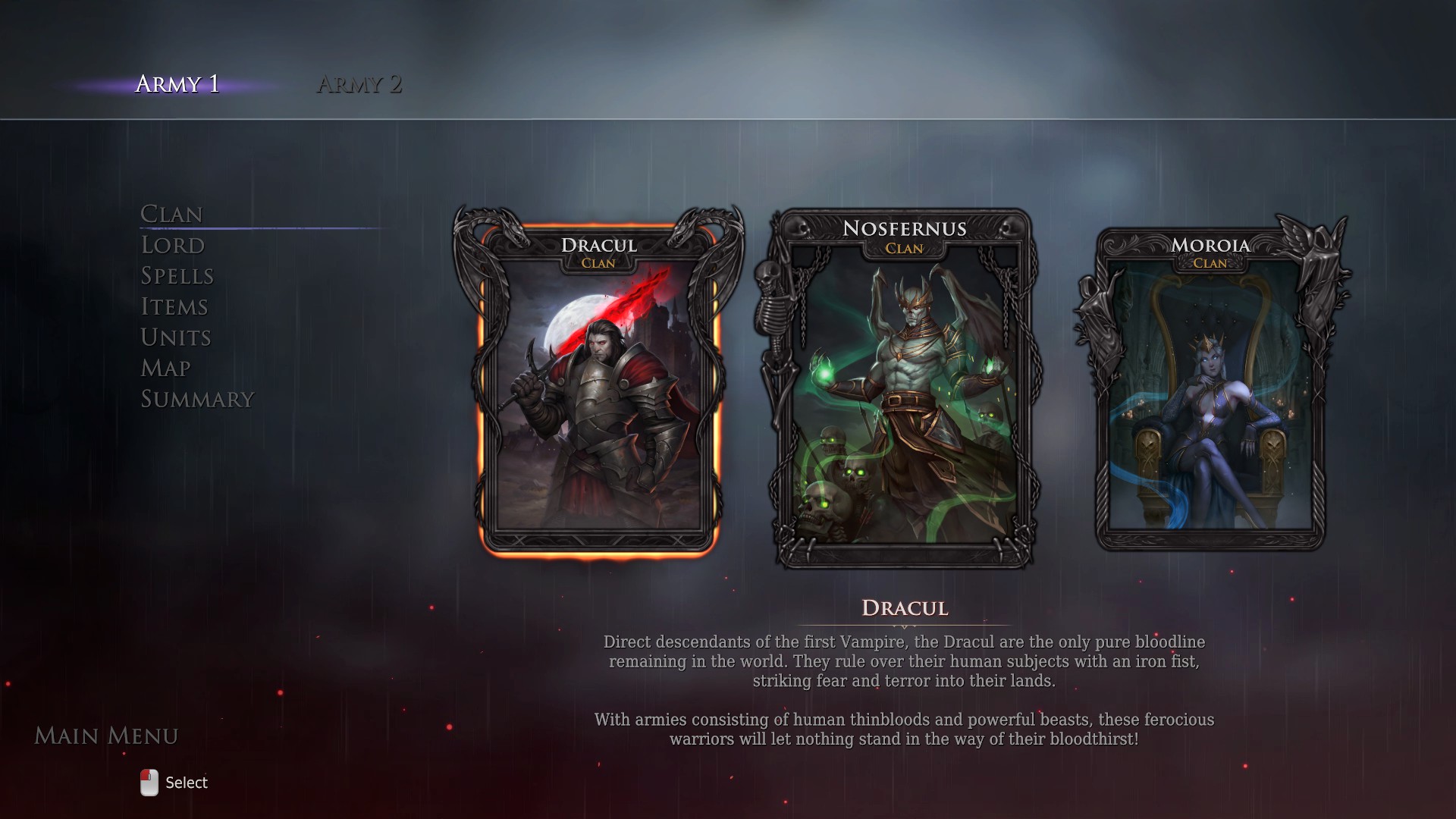
Blood, Blood Everywhere, So Let’s All Have a Drink
The strategic map is not an unfamiliar one, though it does have its touches of innovation that give it a unique feel. It’s divided up into provinces that often contain locations such as keeps, forests, caves, blacksmiths, wishing stones, and so on that each offer unique benefits to those that claim and upgrade them. For example, a populated city will provide a reliable income of blood, a third-tier keep may give the holder the capability to recruit some of their elite core units, while a blacksmith allows them to spend some of their accumulated blood to craft new pieces of equipment for their lords to benefit from.
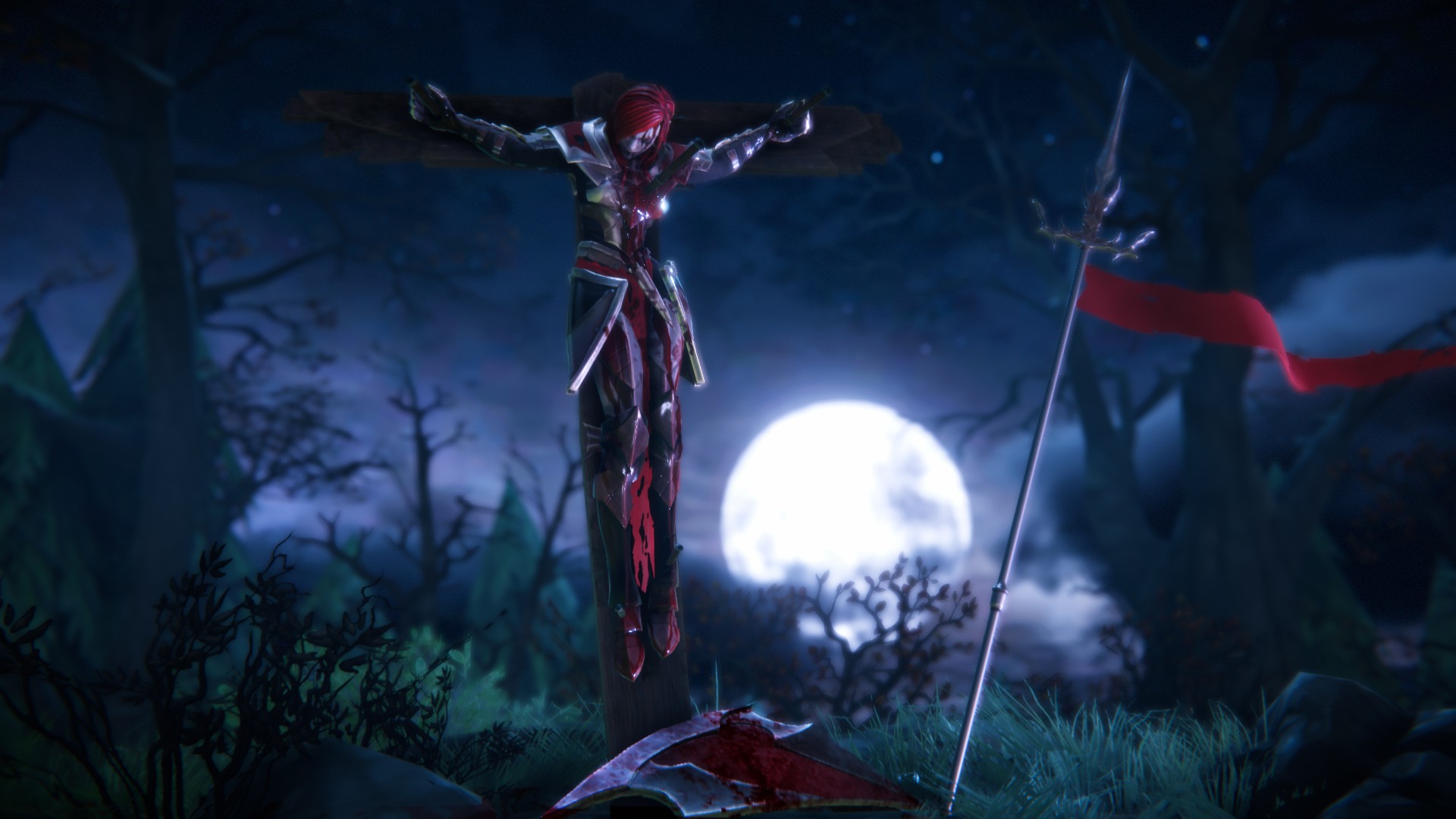
As territory is claimed and battles are won, you’ll gain experience for both your units and your clan as a whole. Clan upgrades are faction-wide skill trees that improve just about every aspect of your armies and territories. Depending on how you specialize, you can have incredibly powerful lords, units that are recruited with several levels of experience, improved blood income, and more. The wide variety of focuses for you to dabble in offer even more of a choice by often having several tiers, allowing you to really hone in on a specific area if you so choose.
Cards play a significant role on the strategy map as well (the combat map too, but we’ll get to that later). Cards are granted by being victorious in battle, purchasing them with blood from libraries, and by the passage of time. Your own preferences will determine which you find the most use with, but like the upgrade tree, there are plenty to get your hands on. Some are simple and will grant you bonus blood while most others will cost you some amount of that resource to grant an immediately consumed benefit, like healing the units in an army or acquiring magic items cheaply.
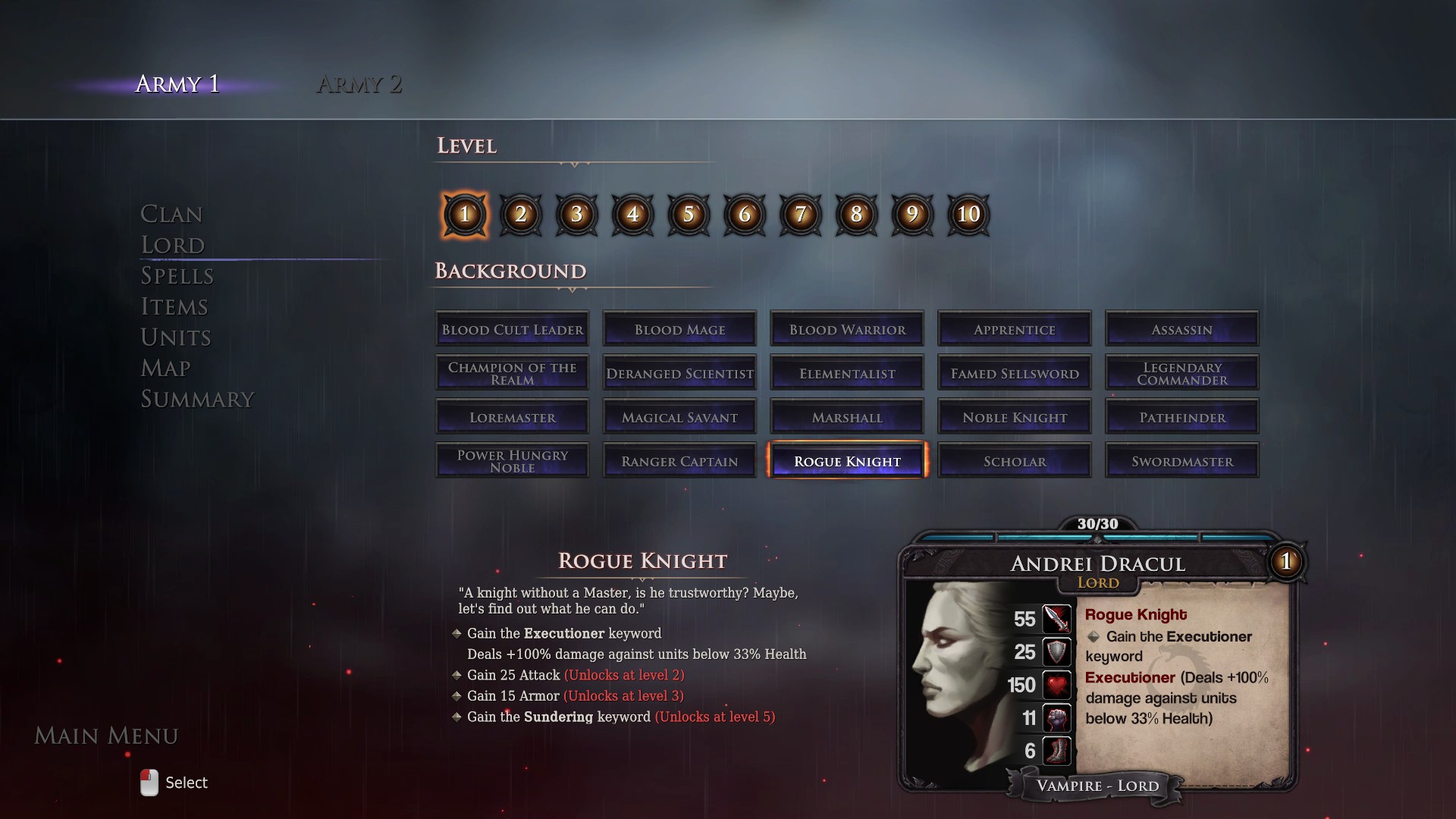
The Undead, the Beastly, and the Poor Bastards That Suffer Them
Combat in Immortal Realms: Vampire Wars is grid-based and will remind veterans of other games in the genre like Heroes of Might & Magic. It’s straightforward and to the point, which makes it easy to quickly get into playing, but also makes it so that frequent battles may start to lose their luster. This is made worse by a lack of variety, particularly when seeing the same maps again and again. I found the variety of units to be a strong point, particularly since each is not only made up of attributes but also abilities (mostly passive, some active) that made it so that each was unique. Though they’re all categorized as archers, warriors, tanks, or assassins, one unit may be noticeably different from another in the same grouping even if they fill a similar role.
A different set of cards is used in combat as opposed to the strategy layer. These cards act less like general events and much more closely represent magical spells, dealing damage, healing and protecting allies, and so on. They drain your lord’s mana reserves which often take several turns to replenish as they recover quite slowly. As your lord levels, you can choose which of these to improve from three options, each providing different benefits to improve on the original card.
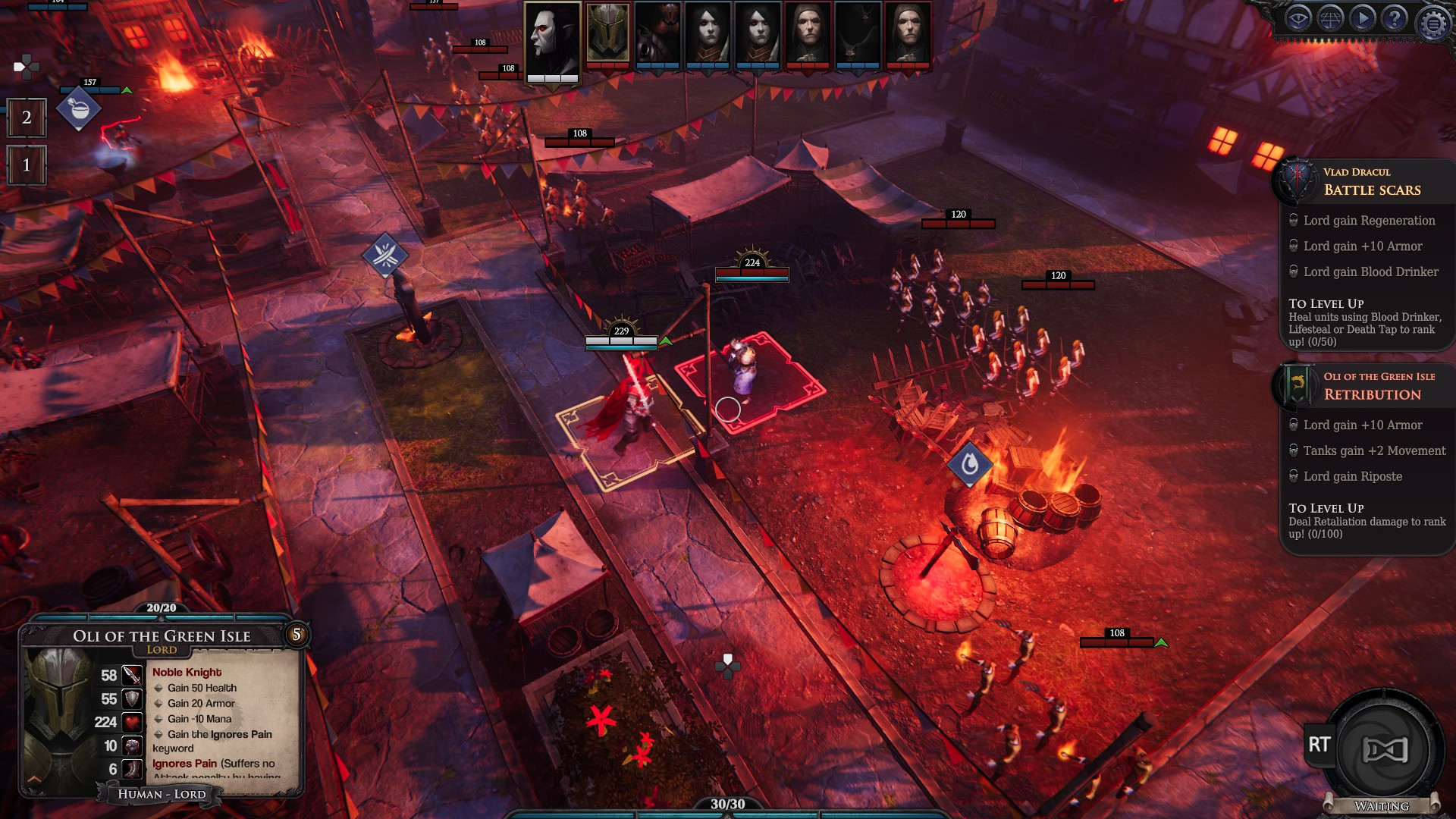
The AI itself is acceptable, though I often found myself wondering why my enemies hadn’t taken advantage of a vulnerability that they had opened up in my forces. Although I never had my heart broken that one of my units hadn’t been wiped out, it was common that I would win battles that were determined to be evenly matched without losing a single unit while wiping out the enemy forces entirely. For the most hardcore of gamers, where the challenge is everything, this may be a deal-breaker, though I found that other areas of the title made up for it even if it was a bit on the easy side.
My only real complaint here is concerning the ease of gathering information. It’s almost impossible to see what card an enemy plays against you as it is particularly tiny and burns away as you’re attempting to pull out your magnifying glass. Any status effects that are on units must also be viewed in the slowly scrolling card that appears as you hover over them. It would be a vast improvement if more info was readily available to the player at all times.
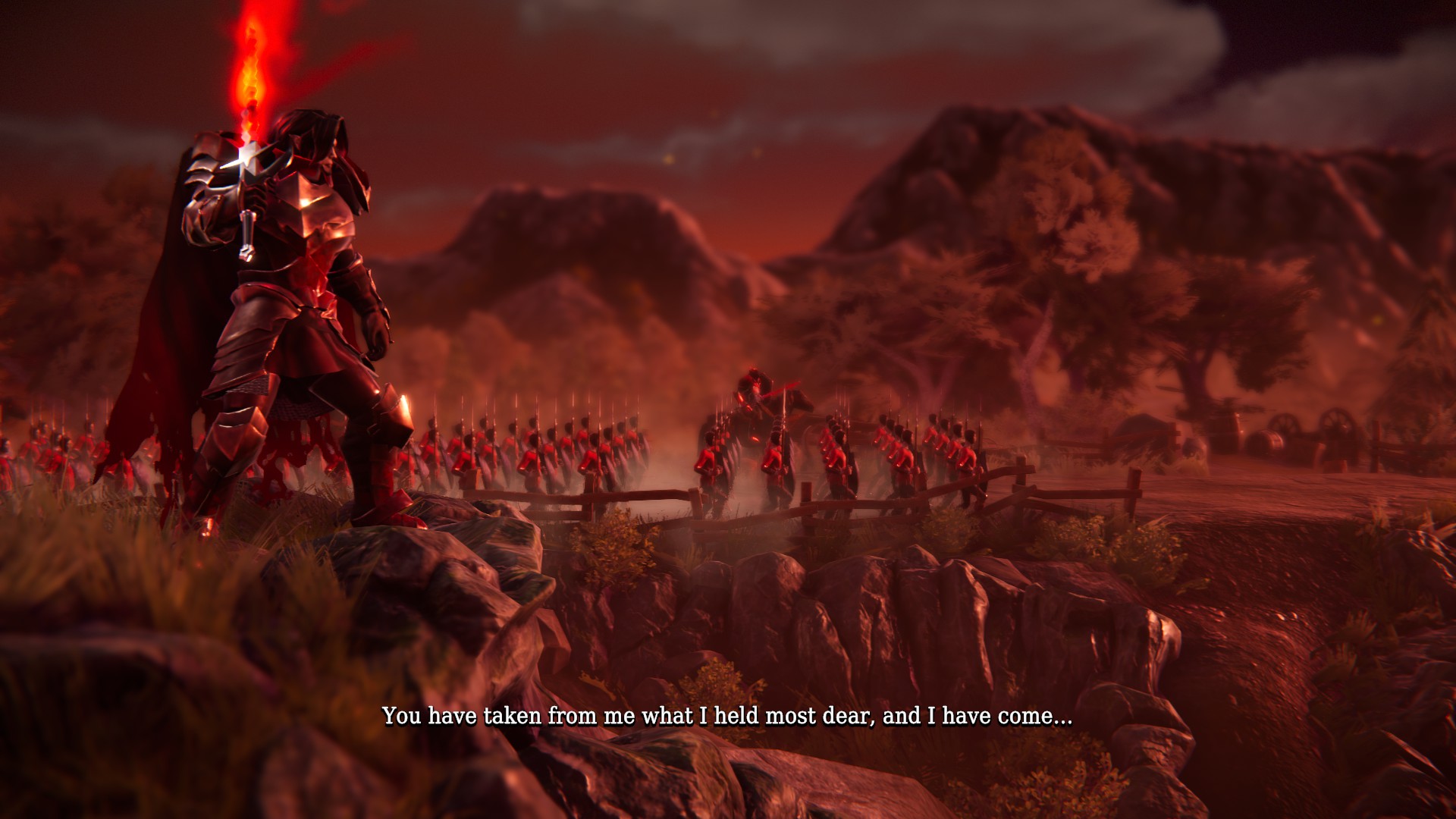
Verdict
Immortal Realms: Vampire Wars is a solid addition to the genre. Its setting stands out as a unique one to me and although there’s certainly plenty of inspiration taken from the legends we’ve heard in the past, Palindrome Interactive made it their own. The interlocking systems of the strategic map and tactical combat are designed well and offer plenty of opportunities to customize your clan as you progress through a scenario. I’d recommend that tactical strategy fans give this one a go at some point, even if they’re on the fence. It may not be the most challenging title that they’ve ever played, but most of its other aspects more than make up for its shortcomings.

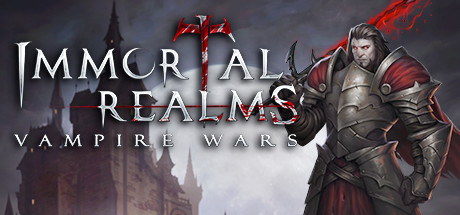









I’m a games artist myself, and looking at this game through a slightly more technical lens than the average player, I can say that although graphically it isn’t cutting edge (although that may be intentional for various platforms) it’s atmosphere is fantastic. It’s extremely immersive, and fun to just move the camera around and zoom in on things. The details especially in the battle maps are dialed down but presented in such a way that it’s enjoyable to just look around before the fight.
Something else I’ve not seen mentioned elsewhere is the plot and progression are extremely satisfying in the main campaign (all I’ve played so far), again, considering visually it looks (from the cut scenes) like a much older game the pacing is fantastic. For example, there are three main lords, and for each lord there are 4 or 5 levels to be completed in order. Each has a unique style (a knight, an undead, and a witch) and plays very differently causing you to prioritize differently in both the kingdom and battle areas, just as you might be expecting things to get stale this breaks that and keeps things fresh. Also, usually around level 4 or 5 in each lord you will find something completely new on the map, and it’s engaging that you have to then think how that unit or building might be relevant or can be used.
On the whole this game is a real hidden gem for me, and criminally under appreciated! I’d say it’s also quite a good game if you want something a bit different to what you normally play.